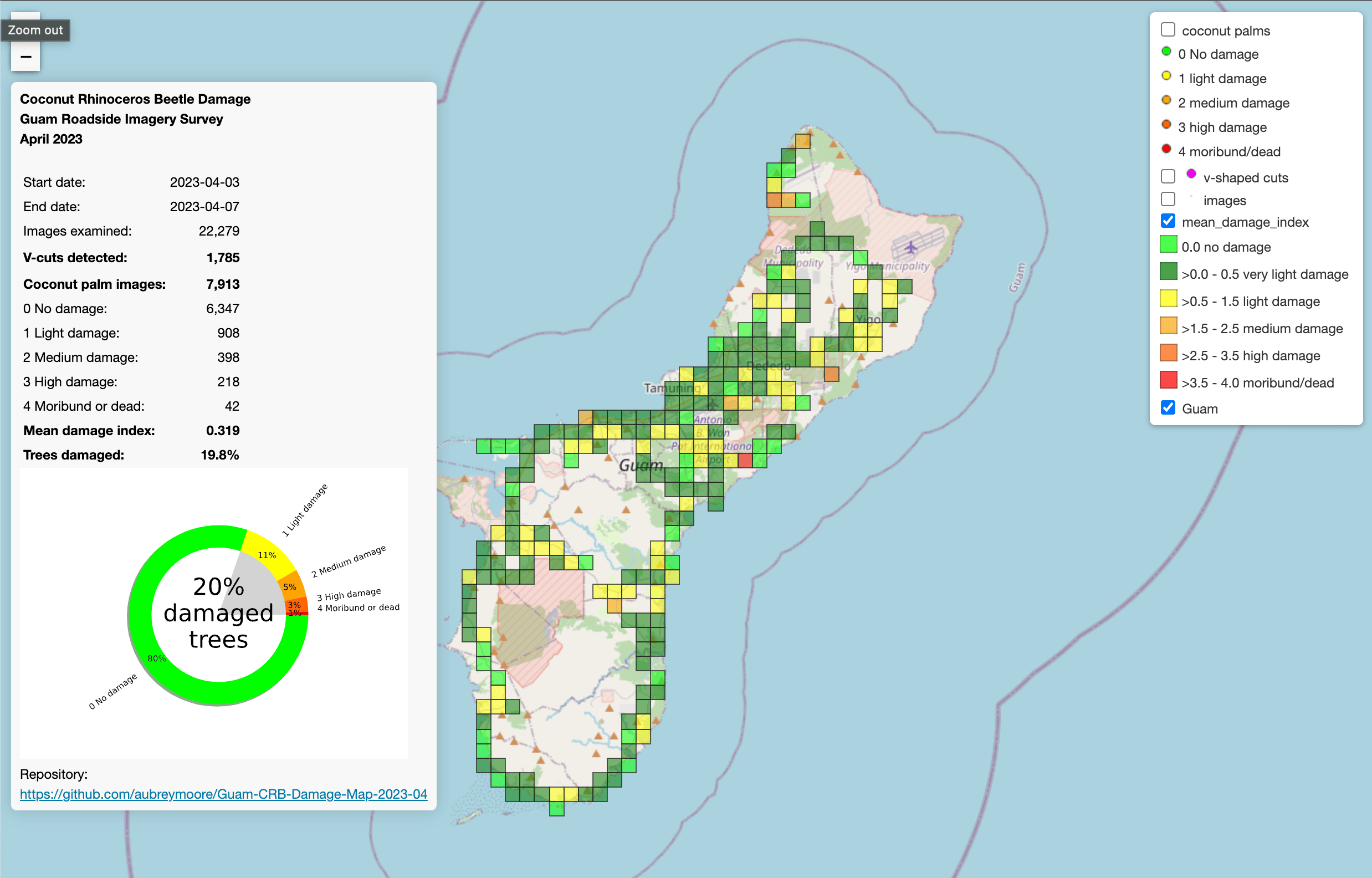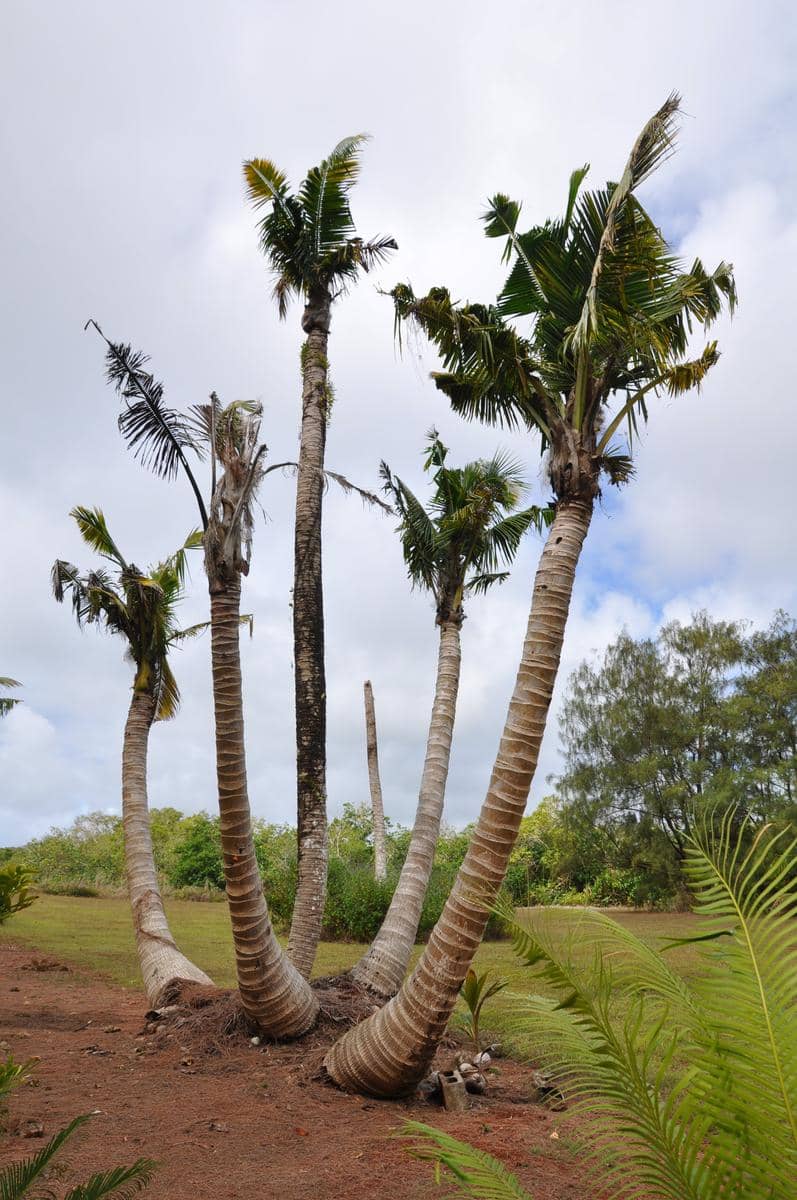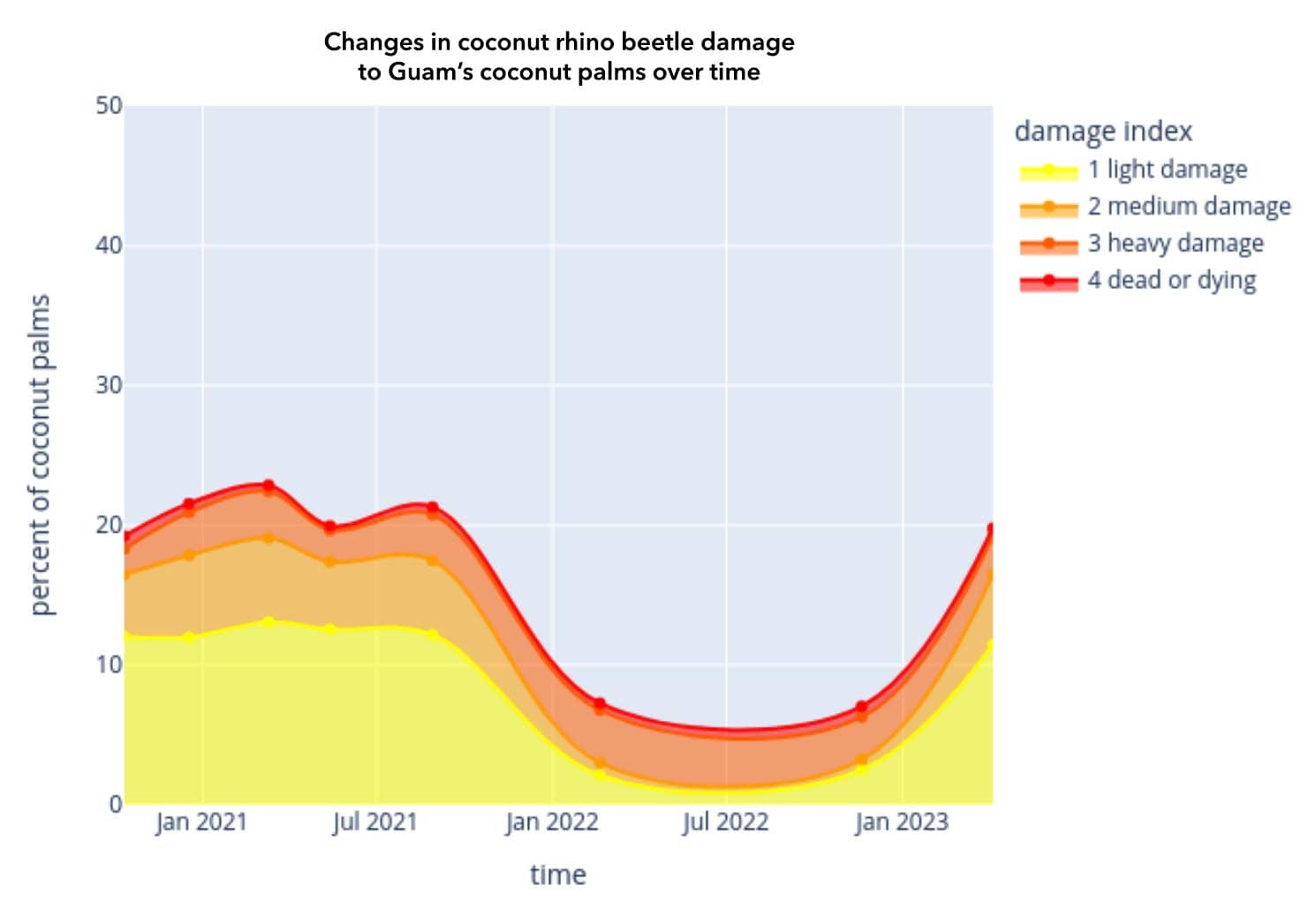- Home
-
Admissions
-
Academics
-
Students
-
Research
-
Research Centers
- Cancer Research Center
- Center for Excellence in Development Disabilities Education, Research & Service (CEDDERS)
- Center for Island Sustainability (CIS)
- Marine Laboratory
- Micronesian Area Research Center (MARC)
- UOG Land Grant | agInnovation Research Center
- Water and Environmental Research Institute (WERI)
-
Programs and Departments
- Guam EPSCOR
- Guma' Tinemtom - Micronesia Data Laboratory
- Pacific Islands Climate Adaptation Science Center (PI-CASC)
- Pacific Islands Cohort on Cardiometabolic Health (PICCAH)
- Research Corporation of UOG
- RFK Memorial Library
- UOG Press
- UOG Sea Grant
- University Libraries Digital Team
- NASA Guam Space Grant
- NASA Guam EPSCoR
-
Research Centers
-
Outreach
- Giving
- Alumni
-
About
Survey shows rhino beetle damage in 20% of Guam’s coconut palms
Survey shows rhino beetle damage in 20% of Guam’s coconut palms
Survey shows rhino beetle damage in 20% of Guam’s coconut palms
5/19/2023




The latest island-wide roadside survey of coconut palms shows that 20%, or one in every five, are damaged by the coconut rhinoceros beetle.
The roadside survey was carried out the week of April 3 by University of Guam entomologist Dr. Aubrey Moore, who has been tracking the damage since 2020 using A.I.
In October 2020, the proportion of coconut palms with visible damage from CRB ranged from 7% to 23%. That percentage dropped to about 7% during 2022 but is now back to 20%.
Moore’s surveys involve taking high-definition digital images of the roadsides of all major routes in Guam at a rate of one per second. Back in the lab, a computer program developed using an artificial intelligence technique called deep learning examines every image, finds all the coconut palms, assesses the damage to each, and generates an interactive map that is color-coded by damage level. The map from the April survey can be viewed at https://bit.ly/2023crbsurvey.
This survey method is a big improvement over the standard CRB damage monitoring method, Moore said, which requires visual inspection and assessment of individual palms.
“We can quickly measure damage to thousands of palms visible from Guam’s major roads
instead of looking at just a few hundred,” he said. “This means that our damage
estimates are much more precise. The data will be used to measure changes in damage
in response to CRB pest control activities.”
Moore will be presenting these latest findings at the Invasive Species Council later this month, a body created by public law in 2011 and tasked to develop an invasive species management plan and to provide annual reports on progress with the plan’s objectives to the governor and legislature.
Moore’s work on monitoring CRB damage in Guam is supported by grants from the U.S. Department of the Interior – Office of Insular Affairs and the U.S. Forest Service.
